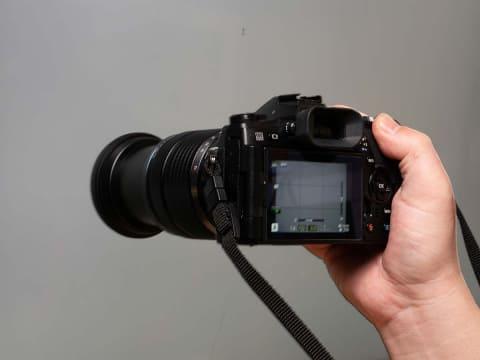Digital camera sensor dust that may...
07
04
Digital camera sensor dust that may be on more than you think
Shooting conditions that make it easier to capture the shadow of dust
You can't know if there is dust unless you take a picture. Basically, if you take a picture of white paper, etc., you can easily see the dust. However, there are some tricks to make it easier to see.
I'm looking at a computer screen. It's easy to display a white screen on your computer and shoot itBasically, you can use any lens, but it's better not to use a wide angle. This is because the periphery tends to be dark, and the narrower the shooting range, the easier it is.
Set the aperture of the lens to the minimum aperture. It is F22, F16, etc. in the state where the numerical value of the F value becomes large.
Actually, what is captured is not the dust itself on the sensor, but the shadow of the dust. Here, we will make the shadow come out strongly. Imagine a situation in which shadows are clearly visible in everyday life. Isn't it when the sun's strong sunlight is stronger than when the light is diffused like a cloudy sky? As for the condition of the light that hits the sensor, narrowing it down is closer to the latter.

Aperture priority is convenient for exposure mode. Of course, even if it is other than that, it doesn't matter if you can make the minimum aperture.
Keep the sensitivity as low as possible. Base sensitivity is fine. For most cameras, I think it's ISO100 or ISO200. You don't need to use extended sensitivity to lower it.
The shutter speed will naturally be longer, but you don't have to worry about it. Rather late is better. If you have image stabilization, turn it off. What I want to photograph is the shadow of the dust, so it is convenient for me not to be able to see what is being photographed because of blurring.
Set the focus to manual focus and make it out of focus.
In summary
and so on.
Shooting with the minimum aperture and out of focus is the basics of capturing the shadow of dust. It does not matter if the lens is a wide-angle lens, but the angle of view in the standard range is goodIf possible, I would like to shoot white paper with uniform brightness. However, it is quite difficult to take a picture without unevenness. Writing away from the camera makes writing easier, but then you'll need a large piece of paper unless you're using a telephoto lens.
The recommended method is to display a pure white window on your computer and bring the lens as close as possible. If you're on Windows, you can open Notepad, and if you're on a Mac, you can open TextEdit in full screen. If the screen is not very bright, I think it will be 1/8 second or more. There is enough camera shake, and if the focus is set close to infinity, it will be out of focus, so even if the computer screen is dirty, it will not be mistaken for dust on the sensor. The reason why I want to avoid wide-angle lenses is that they have a deep depth of field (the range that can be seen in focus is wide), and it also helps to prevent anything other than dust from the sensor from being captured as much as possible.
Also, please be careful not to hit the computer screen with the tip of the lens.


![[Kill personally developed games] Top class in app history! Too beautiful water puzzle "a [Q] ua" | Famitsu App for smartphone game information [Kill personally developed games] Top class in app history! Too beautiful water puzzle "a [Q] ua" | Famitsu App for smartphone game information](https://website-google-hk.oss-cn-hongkong.aliyuncs.com/drawing/article_results_7/2022/3/3/66755df992ff2d2b1e1ab43844ef9f88_0.jpeg)





![[Latest in 2021] 10 recommended seat covers for cars!If you want to improve the texture and functionality of the car, choose the mounting type and material. [Latest in 2021] 10 recommended seat covers for cars!If you want to improve the texture and functionality of the car, choose the mounting type and material.](https://website-google-hk.oss-cn-hongkong.aliyuncs.com/drawing/article_results_7/2022/3/3/e5b44589e77141f3a633189165fb6f60_0.jpeg)